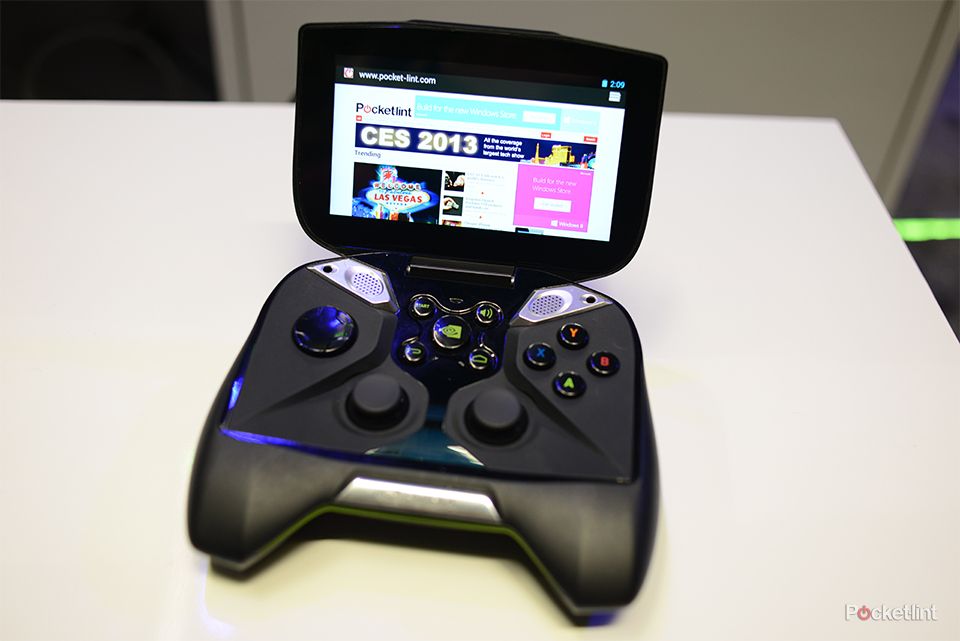Nvidia could be on to a real winner with its Project Shield. Turning up entirely out of the blue at its CES press event, the console and controller combo could be a revolution for gaming.
It combines a Tegra 4 chip, 5-inch 720p display, HDMI out and Steam's Big Picture as well as Android Jelly Bean into one formidable gaming machine.
Pick up the Shield and you will be surprised at how light it is, especially given that it has a proper gaming rig built inside it and a 5-inch screen on the top. It's wrapped up in matte black plastic, with little hints of Nvidia green around the edges.
It is slightly more understated than some of the more garish gaming machines but, thanks to its interchangeable screen tags, can be made more colourful if you desire.
The screen itself - used to protect the controller's dual analogue sticks when folded - is sharp and vibrant. It isn't of the standard we have seen on some of the more flagship smartphones at CES this year, but then we doubt Shield will cost anywhere near as much.
That 5-inch screen is touch sensitive, letting you browse through Big Picture or Tegra Zone on Android. You can also use it to interact with Jelly Bean proper, using the Shield to browse the web or run other Android apps. It isn't easy typing on the device simply because of its shape and layout, but then we don't see many using the Shield for conventional Android functions.
Gaming is a very different story. Streaming from PC to the controller is instantaneous and very easy to set up. You simply hit the big button in the middle and then scroll over to the PC option, hit the icon for your rig and it will start mirroring immediately.
Latency is non-existent and playing through graphically intensive titles like Need For Speed looks great. We particularly enjoy being able to send the games to a big screen TV via the controller's HDMI out. It cuts out the need entirely to have a PC sitting near your living room TV and turns the Shield into much more of a conventional, almost Wii-U-like, games console.
At the top of the controller is a pair of rather powerful speakers. Loud enough to dampen even the sounds of CES, they sounded decent. Things were naturally a touch tinny but given the size of the controller and the amount packed in, its forgivable.
Playing an Android title on Shield, especially the pumped-up Tegra Zone options, is especially good. Some, like the boxing tech demo used at Nvidia's press briefing, show off its second-screen functions. You can, for example, have one global stream of a game on the big screen, with the shield showing your personal display - in this case the boxing character rather than the ring. This means if an Android title were coded right, multiple Shields could be used for each player, with a global feed on the TV.
This is a real risk-taker for Nvidia and is the first time the company has launched a games console. It blurs the lines between mobile and home gaming and could transform the way we play video games. Our only concern, apart from whether it will sell, is the price difference between PC titles and Android.
Fire up Big Picture and Dishonored might be there for £30, say, while the Tegra Zone might have apps for £4.99. It's down to consumers which they choose, but if Shield is succesful, at some point the two quality standards will have to meet in the middle price-wise.
That argument aside, this is a premium product, is more than powerful enough and does things so differently we can't help but be excited. Project Shield is planned for Q2 release. No pricing has yet been announced.





